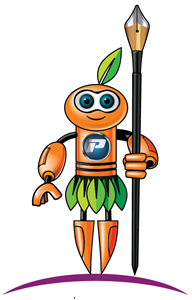29 Aug Discussion Board
Discussion Board
“Do you use metrics to measure your technical documentation output? Or do you leave it to customers to find the improvement areas? If a process is followed by you and your team, please share the method, your experience with it and challenges if any.”
The success of any business depends not only on product quality but also on user acceptance. You have to ensure an excellent user experience by providing the user with every possible piece of information about a product. Technical writers are creating content to keep up with the evolving needs of their users, ferreting out problematic areas and making changes where necessary to ensure a reliably smooth user experience.
But how do we know whether these contents are actually performing? Here comes the role of technical writing metrics. Organizations use precise technical writing metrics in order to ensure that their documentation effectively conveys the intended message. In the following discussion, we will learn more about the use of technical writing metrics.

The Discussion
Rama Shadija: Yes, metrics are very important. It has a lot of advantages. There are diverse ways to measure it. One of the main points is, many people view and take a lot of help from documentation but we don’t come to know. So this year we have introduced Community, where we are building it. So we come to know the number of times documents are viewed, which are top viewed documents, etc. it is kept open with comments to be interactive. Also, we are trying to reduce direct dependency on developers and building the QnA and discussion threads will follow. Soon we will give access to customers as well. Before for clients, internal systems and tools were used. Now our focus is on Community.
When I say diversity in metrics meaning you can have surveys, measure KPIs, etc.
Mridula Menon: This is my favorite topic so i will go first:

Readability (Flesch Reading Ease)
I try to ensure my team’s average score per doc is > 60.

Searchability
Doc must appear in the top three results.

Findability
Average time not more than 10 secs.

Likeability
Keep the count of thumbs down to a zero.

Accuracy and Relevancy
Conduct CRUD on docs every Quarter end.
Besides these Click Help gives a plethora of out of the box reports.
We do not have the support of the engineering team so we are a self sustained Doc team.
Recently our sales team shared with us that our documents help them close the deals earlier. However we do not have data on that. It would have helped us with a measure of revenue impact.
Akash: I use readability score and the percentage of passive sentences to gauge my content. The rest of the metrics that Mridula mentioned, we have a DocOps team that takes care of it.
Anuradha Chandrasekaran: We use confluence for documentation in our company. One of the metrics that we follow to measure our documentation is to gather the page view information for each page (number of page views) and page rating. This analytics help us understand how to improve the documentation.
Sunil: I believe hotjar recordings coupled with Google analytics can be a great asset to a documentation project. for example, identify pages with high bounce rate from GA and then watch hotjar recordings for these pages to view actual user behavior. The best metric that remains is customer feedback(from a thumbs up/thumbs down button, comments, customer survey). A similar feedback can come from your customer success team.
Deepti Sawney: We have a process in place. Peer review ➡️ Product / Solution owner review ➡️ Customer facing executives/ BA review.
We are now trying to find our way for direct customer access. One customer at a time.
Ashish Kumar Pathak: Bounce rate, page views, scroll time is something that is calculated based on diff. Geographical area to understand user pulse.
"One day I will find the right words, and they will be simple."
- Jack Kerouac




No Comments